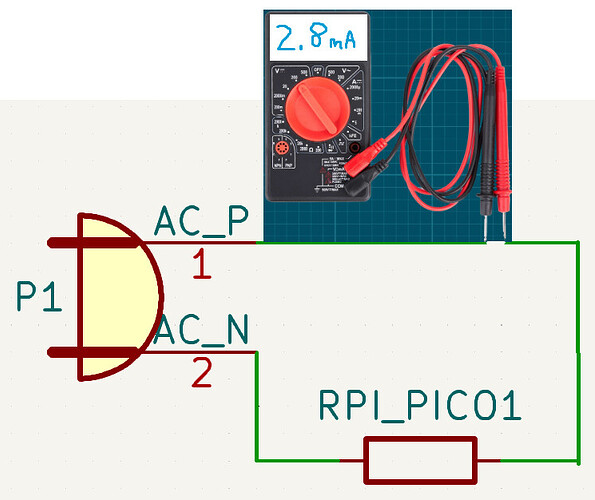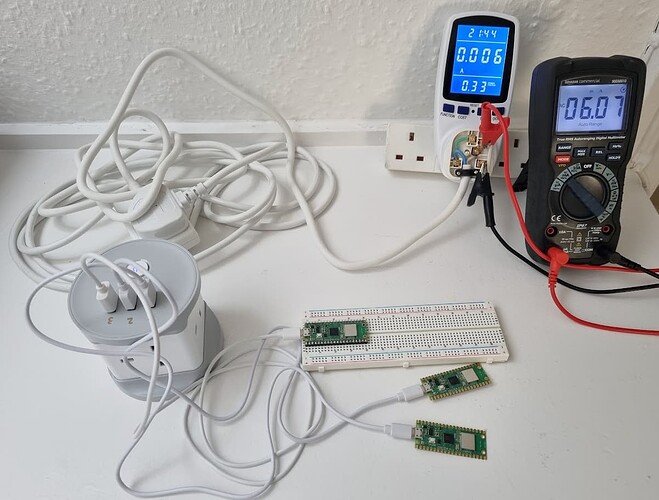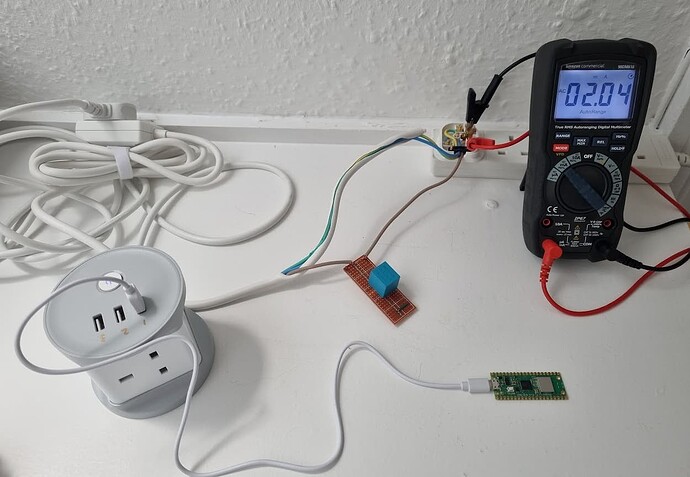Yet another solution…
This device can measure current down to 1 mA:
From the webpage at the link shown above:
Dr. Wattson is an Energy Monitoring Module from Upbeat Labs that allows you to easily incorporate high quality AC energy monitoring and measurements in your next project! It is coupled with easy to use Arduino and Python libraries that together with the Dr. Wattson Module make getting quality AC energy data like RMS Current, RMS Voltage, Power Factor, Line Frequency, Active/Reactive/Apparent Power a breeze.
The unit comes pre-calibrated, enabling you to start taking quality measurements from 90-240v, at either 50 or 60 Hz, and for currents up to 15A. You don’t need any additional CT/VT or other components.
Dr. Wattson is based on the MCP39F521, a single-phase power monitoring chip from Microchip.
The board is designed to be tolerant of different logic levels using bi-directional level shifting, so it can be used with both 5v and 3.3v systems.
Dr. Wattson caters to both the novice and advanced user! The libraries are very comprehensive and allow for advanced usage, while still making it intuitive and easy to use for the common use-case.
If you’re familiar with the MCP39F521 and its calibration and other commands it supports, you can also change the measurement range by changing the burden resistors on the board and recalibrating the board (essentially treating the Dr. Wattson board as a breakout board for the MCP39F521).
Whether you want to measure small standby power consumption or larger loads, Dr. Wattson has you covered. Boasting a 4000:1 Dynamic Range, and capable of 0.1% accuracy, the MCP39F521 is a versatile chip, allowing you great flexibility with measurements. Dr. Wattson takes that flexibility and makes it easy to use! Dr. Wattson comes calibrated to measure currents from 5mA up to 15A.
[Version 1 of the Dr. Wattson board came calibrated for measurements between 1mA and 4A (with a 15A conversion option you could do yourself or we did it for you for a small fee).We have made measurements up to 15A the default in the V2 unit. If you want to measure down to lower currents (like measuring standby current usage), you can change the burden resistors and apply the calibration settings we provide for that lower range. Instructions will be provided!]
![]()









